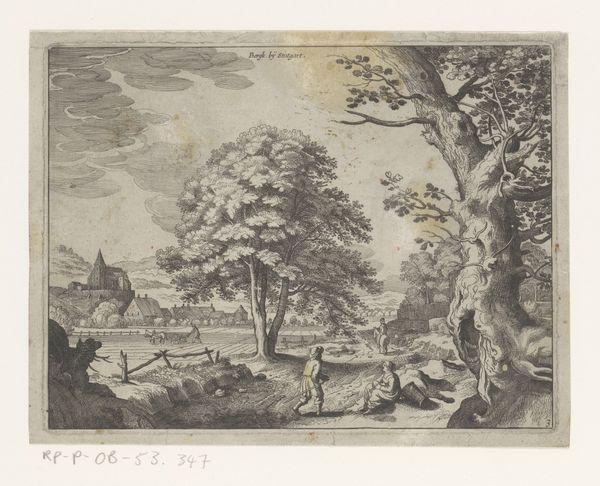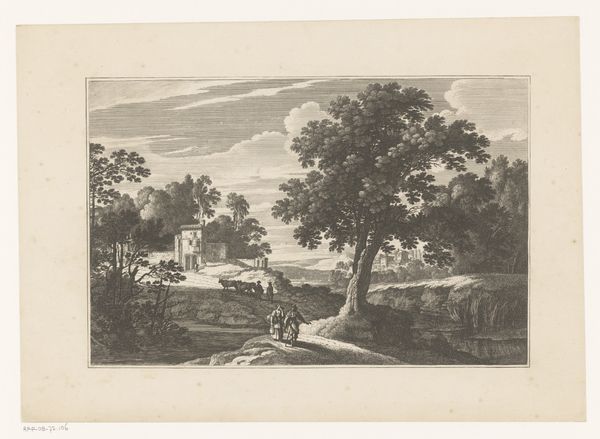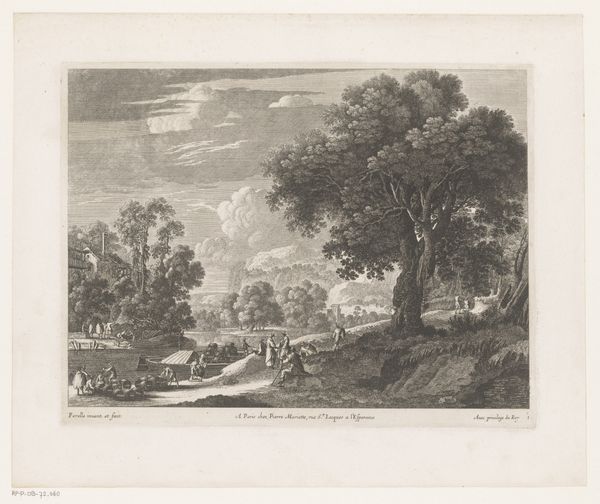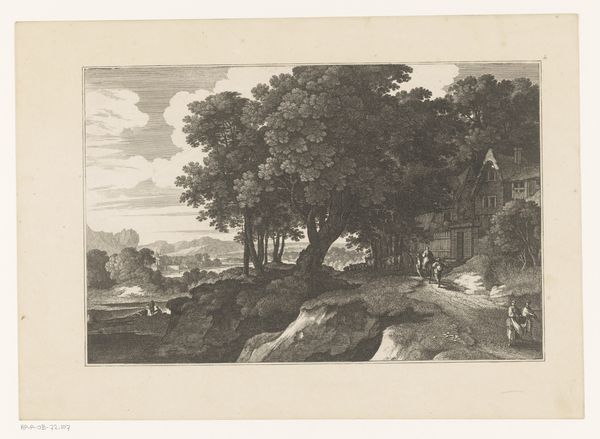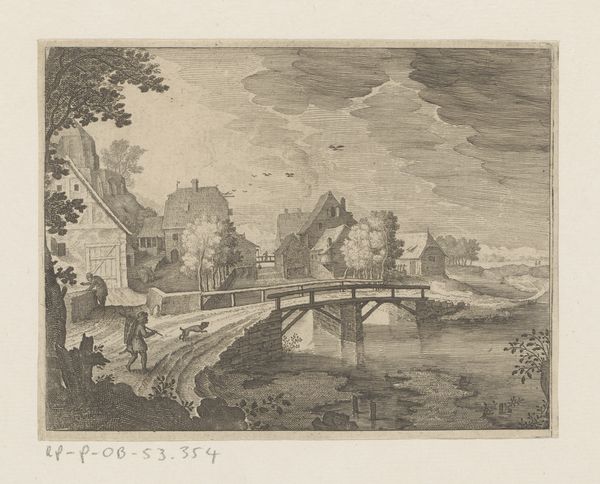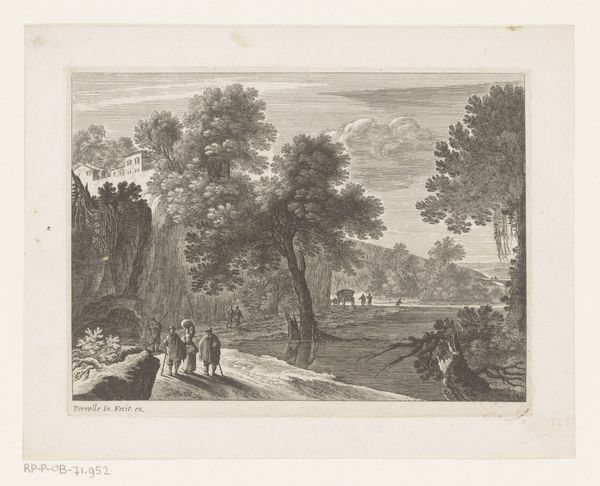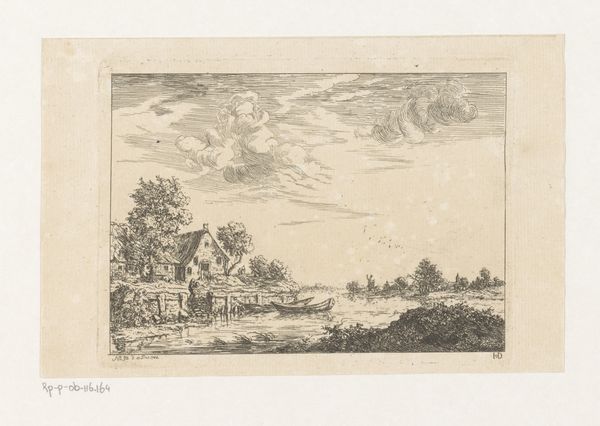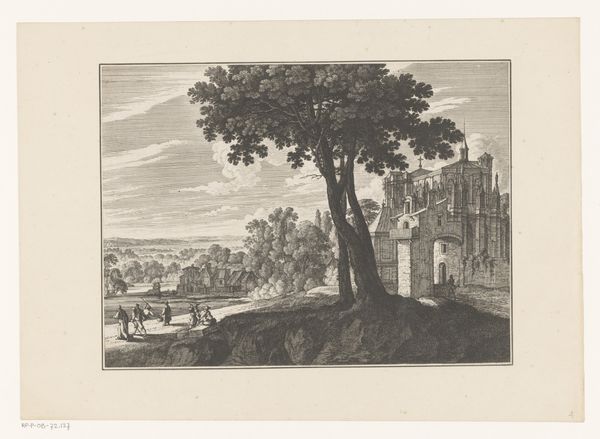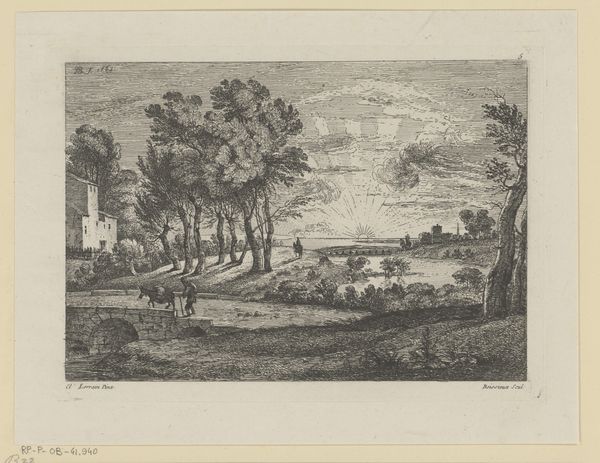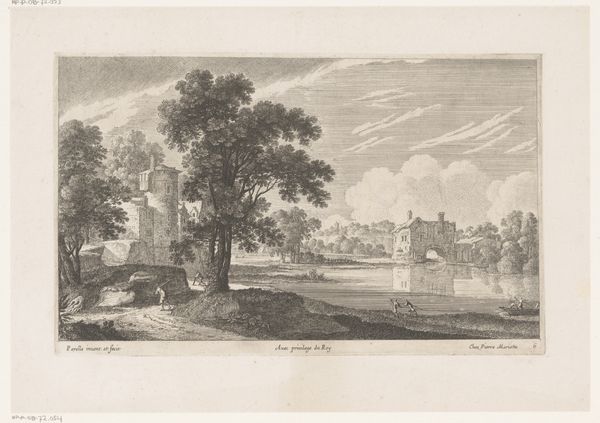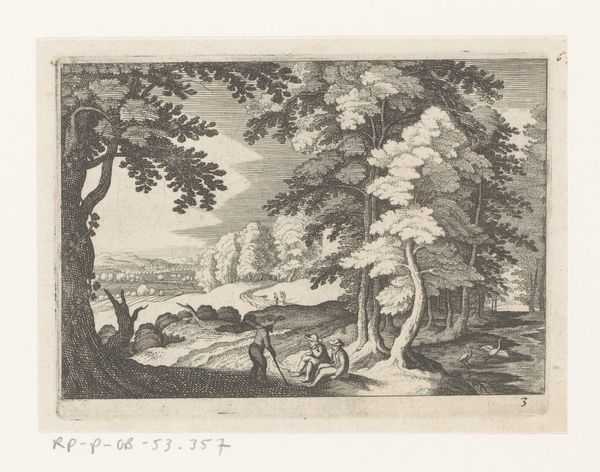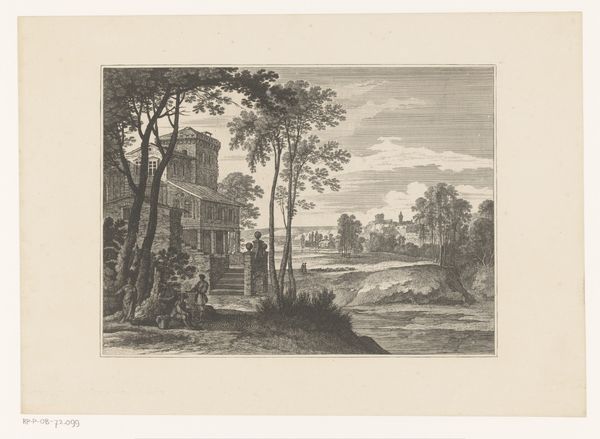
print, etching, engraving
#
baroque
# print
#
etching
#
landscape
#
etching
#
line
#
genre-painting
#
engraving
#
realism
Dimensions: height 136 mm, width 166 mm
Copyright: Rijks Museum: Open Domain
This print, Haltingen, was made by Matthäus Merian in the 17th century using etching and engraving. These are essentially reproductive media, meaning that their main purpose was to disseminate images widely, contributing to the growth of visual culture. To create the image, Merian would have first coated a metal plate with wax, then scratched an image into the wax with a fine needle. The plate would then be submerged in acid, which bites into the exposed metal, creating lines. Ink is then applied into these lines, and the plate is pressed onto paper. The striking contrast and fine detail we see here results from the sharp precision of the engraving process, with careful hatching and cross-hatching to create tonality. Think about the labor involved in the creation of this print, and how it was likely made for a burgeoning middle class, eager to consume images of landscapes, towns, and daily life. The relatively low cost of prints, as compared to painting, meant that more people had access to visual culture than ever before. So, this isn't just a picture, it's also an artifact of a changing world.
Comments
No comments
Be the first to comment and join the conversation on the ultimate creative platform.
